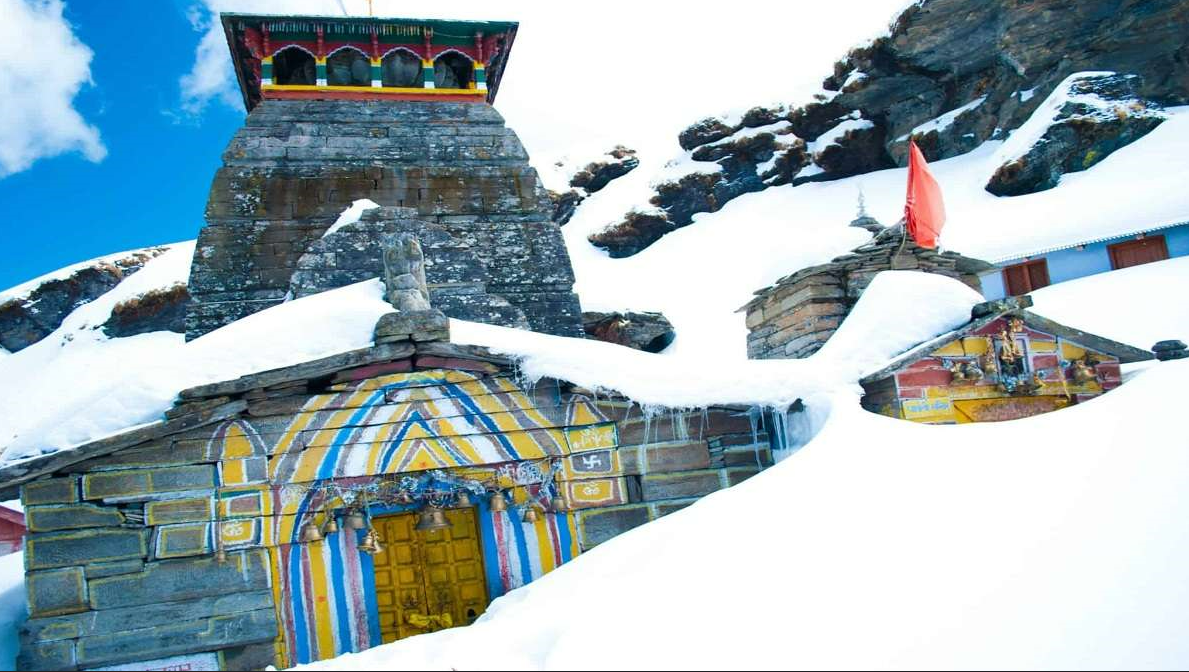Chopta Tungnath Chandrashila Trek : History, Trekking, and Conservation Efforts
Chopta Tungnath Chandrashila Trek : Tungnath, is nestled in the Garhwal Himalayas of Uttarakhand, India. Stands as one of the holiest and highest Shiva temples in the world. Located at an altitude of approximately 3,680 meters (12,073 feet). Tungnath is not only a place of religious significance but also a trekker’s delight, offering breathtaking views of the surrounding peaks and valleys. This essay explores the rich history, spiritual significance, natural beauty, and trekking experience associated with Tungnath Temple.

Chopta Tungnath Chandrashila Trek :Historical and Religious Significance
Tungnath Temple is part of the Panch Kedar pilgrimage circuit, which comprises five temples dedicated to Lord Shiva, each believed to have been consecrated by the Pandavas of the Mahabharata epic. According to legend, after the Kurukshetra war. The Pandavas sought forgiveness from Lord Shiva for their sins committed during the war. However, Lord Shiva evaded them by taking the form of a bull. And when discovered by the Pandavas, the bull’s body parts were scattered in five different locations. These locations, where the Pandavas found the parts of the bull, are now the sites of the Panch Kedar temples, with Tungnath marking the location of the arms (bahu) of Lord Shiva.
The temple itself is believed to be over 1000 years old, with its architecture reflecting traditional North Indian temple styles characterized by stone and wood carvings. The sanctum sanctorum houses a black stone image of Lord Shiva. Attracting devotees and pilgrims seeking blessings and spiritual solace.
Trekking to Tungnath

The journey to Tungnath Temple is as much about spirituality as it is about the adventure of trekking through stunning Himalayan landscapes. The trek typically starts from Chopta, often referred to as the ‘Mini Switzerland of India’ due to its picturesque meadows and dense forests. Chopta serves as the base camp for trekkers embarking on the Tungnath trek, which is relatively moderate in difficulty and spans approximately 3.5 kilometers (2.2 miles) from Chopta.
The trek to Tungnath is a gradual ascent, offering panoramic views of snow-capped peaks, lush green valleys. And diverse flora and fauna along the way.
As trekkers ascend towards Tungnath, they encounter the serene atmosphere of Deoria Tal. A pristine lake surrounded by dense forests and snow-clad peaks. This tranquil spot serves as a perfect pit-stop for trekkers to rest and rejuvenate amidst nature’s beauty before continuing their journey towards Tungnath.
Natural Beauty and Ecological Importance

Beyond its religious and trekking significance, Tungnath Temple and its surroundings are rich in biodiversity and ecological importance. The region is home to a variety of flora and fauna adapted to the harsh mountainous terrain. Including Himalayan musk deer, snow leopards, and numerous species of birds.
The forests around Tungnath are predominantly compose of rhododendron, oak, and deodar trees. Contributing to the region’s ecological balance and serving as habitats for diverse wildlife. The pristine environment surrounding Tungnath underscores the importance of conservation efforts to preserve the natural beauty and biodiversity of the Himalayan ecosystem.
Cultural and Social Impact
Tungnath Temple holds immense cultural significance not only for devout Hindus but also for the local communities residing in the Garhwal region of Uttarakhand. The temple and its annual pilgrimage attract thousands of devotees and tourists.Contributing significantly to the local economy through tourism-related activities and service
Moreover, Tungnath Temple plays a crucial role in promoting cultural exchanges and fostering a sense of communal harmony among people from different walks of life who converge at this sacred site. The temple’s festivals and rituals provide opportunities for spiritual reflection, cultural expression, and social interaction, strengthening the fabric of community life in the region.
Challenges and Conservation Efforts
Despite its cultural and natural significance, Tungnath Temple faces challenges related to environmental degradation and infrastructure development. Increased tourism and trekking activities have raised concerns about waste management, deforestation, and the impact on fragile mountain ecosystems.
Efforts are underway to promote sustainable tourism practices and environmental conservation initiatives aimed at preserving the pristine beauty and ecological integrity of the Tungnath region.
Conclusion
Tungnath Temple stands as a testament to the enduring spiritual legacy and natural beauty of the Garhwal Himalayas. Its ancient history, religious significance. And breathtaking landscapes make it a cherished pilgrimage destination and a popular trekking spot for enthusiasts seeking adventure and tranquility amidst the mountains.
As we reflect on the significance of Tungnath Temple. It becomes evident that its preservation and sustainable management. Are crucial not only for religious and cultural reasons but also for environmental conservation and the well-being of local communities. By embracing responsible tourism practices. And fostering a deeper appreciation for the Himalayan ecosystem. We can ensure that future generations continue to experience the awe-inspiring beauty and spiritual essence of Tungnat. The highest Shiva temple in the world.
KNOW MORE ABOUT RECENT BLOGS
KEDARNATH TEMPLE
RAMAYAN
